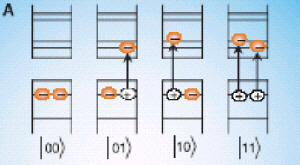Monday, July 29, 2013
coditrons and the void
"The world may instead consist of bundles of properties," says an article in the August 2013 issue of Scientific American. And an object (in object-oriented programming) is a "bundle of properties and capabilities." Theoretical physics, meet programming language theory.
And still, Democritean atomism ("in truth there are only atoms and the void") has not gone away (with atoms replaced with particles): "The application of Platonic reality to physics is fraught with problems."
Now if code describes the lowest level of reality, this level could be seen as composed of coditrons: the logic gates (some quantum in behavior) which, in combination, run the "software" of the universe. The most basic code of physics could be described as the microcode of the cosmic computer. On top of coditrons (think of them like Higgs bosons filling space) and (cosmic) microcode, the code of the universe runs.
As for the higher levels of code above the microcode, there in nothing that says that the codebases of the universe have to be completely consistent. "Paraconsistent logic has been proposed as a means for dealing with the pervasive inconsistencies among the documentation, use cases, and code of large software systems."
What we are seeing is that physics looks increasingly like it can be expressed in terms of programming language theory, microcode, codes, codebases, and even perhaps paraconsistent programming.
Subscribe to:
Post Comments (Atom)

No comments:
Post a Comment